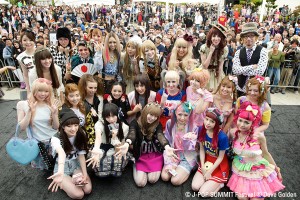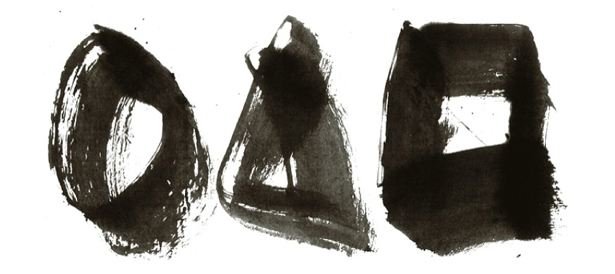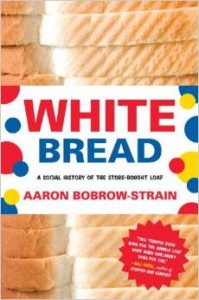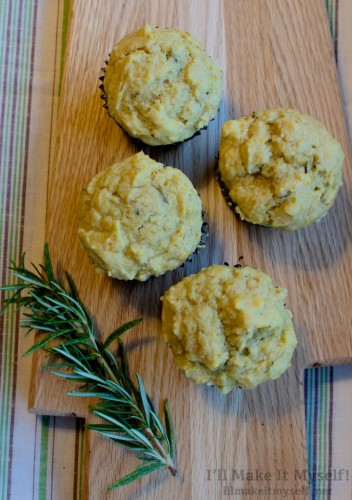I’ll Make It Myself!: Fig-Almond Muffins (Dairy-Free)
L.M. Zoller (CIR Ishikawa-ken, Anamizu, 2009-11) is the editor of The Ishikawa JET Kitchen: Cooking in Japan Without a Fight. Ze works in international student exchange; writes I’ll Make It Myself!, a blog about food culture in Japan and the US; curates The Rice Cooker Chronicles, a series of essays by JETs and JET alumni on the theme of cooking/eating and being alone in Japan; and admins The JET Alumni Culinary Group on LinkedIn.
More muffins! These fig-almond muffins are perfect for autumn and easy to make in Japan. If you’re looking for a break from all the cinnamon and pumpkin products, try one of these!
I’ll Make It Myself!: Marketing Halloween in Japan 2014: KFC Halloween Bucket
L.M. Zoller (CIR Ishikawa-ken, Anamizu, 2009-11) is the editor of The Ishikawa JET Kitchen: Cooking in Japan Without a Fight. Ze works in international student exchange; writes I’ll Make It Myself!, a blog about food culture in Japan and the US; curates The Rice Cooker Chronicles, a series of essays by JETs and JET alumni on the theme of cooking/eating and being alone in Japan; and admins The JET Alumni Culinary Group on LinkedIn.

Source: KFC Japan
As I’ve written before, Halloween has exploded into the Japanese food scene. Ten years ago, there were–as to be expected–barely any Halloween specials or goods. An increasingly large cultural shift toward Halloween as popular (children’s) holiday began sometime around 2010. While some of the shift was motivated by consumer demand, the ramped up marketing has increased awareness and consumer demand, leading other businesses to make their own Halloween specials to keep up with the popularity of the holiday.
This time, we cover KFC’s Halloween campaign.
I’ll Make It Myself!: Whole-Wheat Blueberry-Lavender Muffins
L.M. Zoller (CIR Ishikawa-ken, Anamizu, 2009-11) is the editor of The Ishikawa JET Kitchen: Cooking in Japan Without a Fight. Ze works in international student exchange; writes I’ll Make It Myself!, a blog about food culture in Japan and the US; curates The Rice Cooker Chronicles, a series of essays by JETs and JET alumni on the theme of cooking/eating and being alone in Japan; and admins The JET Alumni Culinary Group on LinkedIn.
Muffins are lovely to make in a moven/oven range. Blueberries tend to be in season in Japan around June-July, and culinary lavender can be purchased in Japan, though where you get it may depend on where you live. I found some at Ikeda Herb Center in Nagano and Nunobiki Herb Garden (English, 日本語) in Kobe, and a friend gave me some from Meidi-ya in Kyoto. If you don’t live near a place that grows lavender, you might try a gourmet grocery or import store, or online. Lavender meant for cooking may be referred to as dried lavender (kansô rabendâ, 乾燥ラベンダー ) or culinary lavender (ryôriyô no rabendâ, 料理用のラベンダー ).
I’ll Make It Myself!: White Bread: A Social History of the Store-Bought Loaf
L.M. Zoller (CIR Ishikawa-ken, Anamizu, 2009-11) is the editor of The Ishikawa JET Kitchen: Cooking in Japan Without a Fight. Ze works in international student exchange; writes I’ll Make It Myself!, a blog about food culture in Japan and the US; curates The Rice Cooker Chronicles, a series of essays by JETs and JET alumni on the theme of cooking/eating and being alone in Japan; and admins The JET Alumni Culinary Group on LinkedIn.
White Bread: A Social History of the Store-Bought Loaf
Aaron Bobrow-Strain
Beacon Press, Boston. 2012
For those interested in food history and culture, White Bread: A Social History of the Store-Bought Loaf, which mainly deals with US bread culture, also covers the rise of shokupan (食パン) in Japan, specifically how SCAP tried to use bread and other “democratic” pastimes (kissing in films, for example) to “break” Japan of its “imperialist notions.”
Although Bobrow-Strain isn’t a Japan specialist, his careful treatment of Japanese food culture and its globalization is a welcome change from mainstream media’s obsession with wacky Japan and even NPR’s weirdly one-sided articles.
WIT Life #275: DC’s Daikaya
WIT Life is a periodic series written by professional Writer/Interpreter/Translator Stacy Smith (Kumamoto-ken CIR, 2000-03). She starts her day by watching Fujisankei’s newscast in Japanese, and here she shares some of the interesting tidbits and trends along with her own observations.
Thanks to a State Department interpreting assignment starting this past week, I was able to spend some quality time in DC. At the top of the list of restaurants I wanted to try was Daikaya, a ramen shop/izakaya located in Chinatown. It opened last year but I never had a chance to visit, so a friend and I decided to make that our Friday night dinner destination. We had reservations at the osshare second floor izakaya so didn’t get to try the ramen on the first floor, but people were lined up out the door waiting to try the Hokkaido-style salt broth creations.
The offerings on Daikaya’s second floor go beyond classic izakaya fare and are truly inventive. Some Read More
I’ll Make It Myself!: Recipe Redo: Rosemary-Orange Ricotta Muffins v2.0
L.M. Zoller (CIR Ishikawa-ken, Anamizu, 2009-11) is the editor of The Ishikawa JET Kitchen: Cooking in Japan Without a Fight. Ze works in international student exchange; writes I’ll Make It Myself!, a blog about food culture in Japan and the US; curates The Rice Cooker Chronicles, a series of essays by JETs and JET alumni on the theme of cooking/eating and being alone in Japan; and admins The JET Alumni Culinary Group on LinkedIn.
An improvement on the first version–incredibly fluffy muffins that can be made in Japan with homemade ricotta.
WIT Life #273: Cleveland’s Japanese culture
WIT Life is a periodic series written by professional Writer/Interpreter/Translator Stacy Smith (Kumamoto-ken CIR, 2000-03). She starts her day by watching Fujisankei’s newscast in Japanese, and here she shares some of the interesting tidbits and trends along with her own observations.
I can’t believe it’s been over a month since I’ve last written here and that we are already welcoming the new school year. I spent a large portion of my summer interpreting for clients on a project in Cleveland, Ohio. I didn’t have high hopes for Japanese connections in this small city, but was determined to find them where they existed. Due to being busy with my job and returning home on weekends, I wasn’t able to explore much outside of the downtown area, but that was enough to find some Japanese influences.
First was the restaurant Noodlecat, said to be “inspired by Tokyo noodle worship and New York City noodle houses.” There is a restaurant downtown as well an outpost at the West Side Market in Ohio City, but I opted for the former to get the full experienc e. I got the Smoked Tomato Coconut Curry Udon with poached tofu, kohlrabi, potato, scallion and coconut curry kombu broth, as it sounded like a really unique combination of ingredients. Unfortunately, both the udon and its companions were disappointing. The noodles had a strange chewiness and even the texture of the tofu was off. Sure enough, when I told my clients that I was surprised the quality of the food had been so poor, they all agreed and said they had Read More
e. I got the Smoked Tomato Coconut Curry Udon with poached tofu, kohlrabi, potato, scallion and coconut curry kombu broth, as it sounded like a really unique combination of ingredients. Unfortunately, both the udon and its companions were disappointing. The noodles had a strange chewiness and even the texture of the tofu was off. Sure enough, when I told my clients that I was surprised the quality of the food had been so poor, they all agreed and said they had Read More
I’ll Make It Myself: Taste Test: Baked Kit Kats (焼きキットカット)
L.M. Zoller (CIR Ishikawa-ken, Anamizu, 2009-11) is the editor of The Ishikawa JET Kitchen: Cooking in Japan Without a Fight. Ze works in international student exchange; writes I’ll Make It Myself!, a blog about food culture in Japan and the US; curates The Rice Cooker Chronicles, a series of essays by JETs and JET alumni on the theme of cooking/eating and being alone in Japan; and admins The JET Alumni Culinary Group on LinkedIn.
These Kit Kats may be old news in Japan, but I finally got my hands on some in Seattle at Uwajimaya and tried them!

Via nestle.jp
JQ Magazine: JQ&A with John Gaunter on ‘Sake Confidential’

“Sake is so deep and varied that one could never stop talking about it. Every day is full of surprises. Not major ones, but usually surprises related to the attention to detail that goes into sake and the interesting stories behind it.” (Courtesy of John Gauntner)
By Eden Law (Fukushima-ken, 2010-11) for JQ magazine. Eden is a JETAA New South Wales committee member, who would like it to be known that if it wasn’t for getting involved with JETAA, he wouldn’t know what to do with his spare time after hours. JET: It’s like the Illuminati, except less about the world domination and more about the fun denomination. Got feedback on this article? Leave a comment below.
If ever there was a prize for most unexpected job opportunity spin-off from the JET Program, the career of John Gauntner (Kanagawa-ken, 1988-89) would be hard to beat, especially after a few rounds of nihonshu. A longtime resident of Kamakura and the world’s first (and only) non-Japanese to hold certification as both a Master of Sake Tasting and Sake Expert Assessor, Gauntner has come a long way since a drinking session with a buddy from The Japan Times led him to this series of fortunate events.
Proving that this beverage continues to be an infinite font of inspiration, Gauntner has recently added a new book to his growing stable of literary output, Sake Confidential: A Beyond-the-Basics Guide to Understanding, Tasting, Selection, and Enjoyment. In it, he covers all aspects of the precious drop: from what it is, how it is made, and how it is meant to be enjoyed (spoiler: any way you like it), to the inside story of its politics, marketing, and the industry itself. But this is no textbook: Like a true sake evangelist, Gauntner enlightens beginners and insiders alike, pairing clear and simple language with confidence and unabashed passion.
In this exclusive interview, Gauntner discusses the state of sake’s popularity in its own country and abroad, what it means being a non-Japanese sake evangelist with his unique qualifications, and what the future holds for him.
What was the reason behind writing this book, and who is its audience?
I wanted to show the depth and breadth of the sake world, to show it has as many avenues for exploration as wine does.
How is this book different from the others?
This book goes beyond the basics and more into depth about many interesting side topics of the sake world.
Is this book designed to replace or update your previous books?
No, it is intended to augment them. This one introduces less sake and is light on the basics,
What’s the market like for these books?
So far it is selling well, but ask me in two years!
What’s left to be said about sake? Are there any surprises left in the industry?
It is so deep and varied that one could never stop talking about it. Every day is full of surprises. Not major ones, but usually surprises related to the attention to detail that goes into sake and the interesting stories behind it.
JQ Magazine: J-POP Summit Festival Returns to San Francisco with Music, Fashion, Film

The annual J-POP Summit Festival returns to San Francisco July 19-20, featuring special performances from May’n and Tokyo Girls’ Style. (Dave Golden)
.
By Sam Frank (Wakayama-ken, 2004-06) for JQ magazine. Sam is the webmaster at the Jewish Community Federation in San Francisco.
Japan is a country that likes to borrow from another culture and make it their own. Punk rock, Spaghetti Westerns, and baseball are just a few things Japan has adopted over the years, and in 2009, the J-POP Summit Festival in San Francisco added a bona fide community event to that list. Similar to Coachella, Lollapalooza, and Outside Lands, the J-POP Summit Festival is an annual street fair held in the City by the Bay that celebrates Japanese popular culture. By introducing the latest in Japanese music, film, art, fashion, gaming, anime, food, as well as niche subcultures, the festival has become a prominent platform to showcase the latest trends and creative innovations from Japan.
“POP is our tradition” is the theme this year’s J-POP Summit Festival, which will be held in San Francisco’s historic Japantown district the weekend of July 19-20. Last year’s event welcomed more than 80,000 attendees, making it one of the largest Japanese festivals in the United States. While Japan is participating in America’s summer festival tradition, it has found a way to distinguish itself from the pack. Bringing together food, fashion, entertainment, and film promises to give the people of San Francisco a lasting impression of Japanese culture.
“Each year we strive to present a compelling mix of the hottest entertainment trends happening in Japan right now, and the J-POP Summit has become a wonderful and unique composite of pop and rock music, edgy kawaii-inspired fashion, modern graphic art, and film and anime content,” says Seiji Horibuchi, president/CEO of NEW PEOPLE, Inc. and chairman of the J-POP Summit Festival. “This year’s event promises to be another important milestone for the evolution of J-pop culture and its fan base in the U.S.”
I’ll Make It Myself!: Rosemary-Orange Ricotta Muffins
L.M. Zoller (CIR Ishikawa-ken, Anamizu, 2009-11) is the editor of The Ishikawa JET Kitchen: Cooking in Japan Without a Fight. Ze works in international student exchange; writes I’ll Make It Myself!, a blog about food culture in Japan and the US; curates The Rice Cooker Chronicles, a series of essays by JETs and JET alumni on the theme of cooking/eating and being alone in Japan; and admins The JET Alumni Culinary Group on LinkedIn.
Can’t find ricotta in your grocery store in Japan? Never fear! It’s a piece of cake (muffin?) to make your own in Japan. Muffins work well in the moven, too.

WIT Life #266: Kajitsu Spring Tasting Reception
WIT Life is a periodic series written by professional Writer/Interpreter/Translator Stacy Smith (Kumamoto-ken CIR, 2000-03). She starts her day by watching Fujisankei’s newscast in Japanese, and here she shares some of the interesting tidbits and trends along with her own observations.
Over the weekend I had the chance to take part in the delectable Spring Tasting Reception held at Kajitsu/Kokage. For those of you who don’t know this spot, it’s about as close as you can get to Japan here in NYC. Last year I celebrated my birthday with a delicious meal at Kajitsu, the restaurant on the upper floor featuring 精進料理 (shojin ryouri), vegan cuisine devised centuries ago by Buddhist monks which was the predecessor to kaiseki .
In the first four years of its existence Kajitsu was located in the East Village, but it moved to its midtown location a year ago. Aside from Kajitsu occupying the second floor, Kokage on the first floor serves non-vegetarian Japanese food and Ippodo near the entrance sells Japanese tea. There is literally something for everyone, and both restaurants are open for both lunch and dinner.
This event was celebrating the promotion of the Executive Sous Chef Hiroki Odo to Executive Chef, as current Executive Chef Ryota Ueshima is returning to Japan. The amazing spread featured Read More
L.M. Zoller (CIR Ishikawa-ken, Anamizu, 2009-11) is the editor of The Ishikawa JET Kitchen: Cooking in Japan Without a Fight. Ze works in international student exchange; writes I’ll Make It Myself!, a blog about food culture in Japan and the US; curates The Rice Cooker Chronicles, a series of essays by JETs and JET alumni on the theme of cooking/eating and being alone in Japan; and admins The JET Alumni Culinary Group on LinkedIn.
While searching for information on the 2014 sakura doughnut line-up (which appears not to be happening*), I stumbled upon this announcement from Mister Donut: the cronut is coming to Japan.
L.M. Zoller (CIR Ishikawa-ken, Anamizu, 2009-11) is the editor of The Ishikawa JET Kitchen: Cooking in Japan Without a Fight. Ze works in international student exchange; writes I’ll Make It Myself!, a blog about food culture in Japan and the US; curates The Rice Cooker Chronicles, a series of essays by JETs and JET alumni on the theme of cooking/eating and being alone in Japan; and admins The JET Alumni Culinary Group on LinkedIn.
This rich dessert showcases two of my favorite Japanese flavors for sweets together in a visually impressive cake.
I’ll Make It Myself!: Honey Cream Scones with Nuts
L.M. Zoller (CIR Ishikawa-ken, Anamizu, 2009-11) is the editor of The Ishikawa JET Kitchen: Cooking in Japan Without a Fight. Ze works in international student exchange; writes I’ll Make It Myself!, a blog about food culture in Japan and the US; curates The Rice Cooker Chronicles, a series of essays by JETs and JET alumni on the theme of cooking/eating and being alone in Japan; and admins The JET Alumni Culinary Group on LinkedIn.
Here’s an easy and delicious recipe you can make in your oven range in Japan!
I had extra cream from the Sailor Uranus cake, so I decided to try a cream scone recipe. Cream scones use heavy cream in place of the egg and butter, which makes them light and airy–and there’s no need to deal with cutting flour into cold butter. Very easy.








